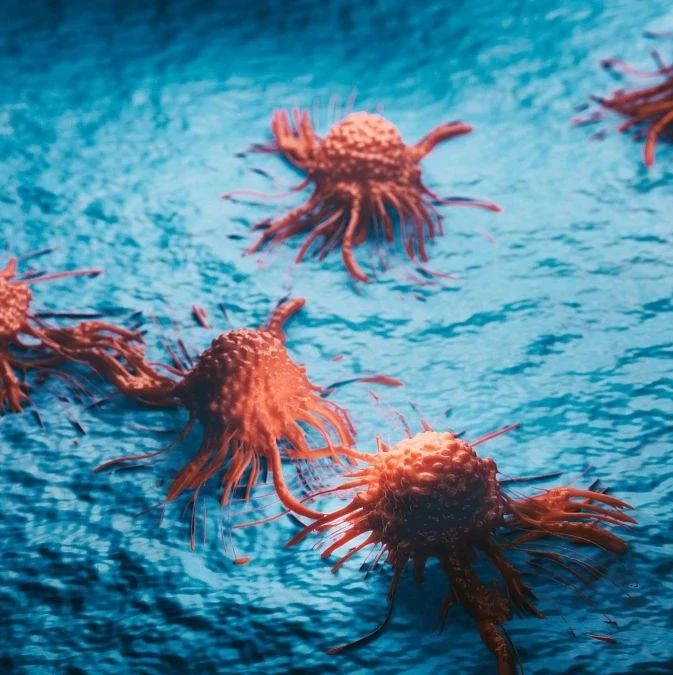
日前,中山大学肿瘤防治中心召开新闻发布会,向媒体介绍该中心马骏教授团队联合国内8家医疗机构协同创新,近期在鼻咽癌临床治疗及个体化治疗方面取得的两项重要进展。这些成果在前不久揭晓的2012年度“中国高等学校十大科技进展”中榜上有名,且为今年广东省唯一入选项目。这些成果标志着我国鼻咽癌个体化治疗已经迈出了可喜的第一步。
据介绍,该项成果由马骏教授团队联合四川大学华西医院陈念永教授团队通过历时3年的研究,发现一个由5个miRNA构成的分子标签能很好地预测鼻咽癌患者的预后。成果以研究文章(Research Article)形式,再次发表于The Lancet Oncology(2012 May 3 [Epub ahead of print])杂志上。
以往,恶性肿瘤的治疗主要是根据疾病的严重程度TNM临床分期进行不同手段的综合治疗。然而,现代医学模式的转变提示恶性肿瘤治疗应由基于表型的循证医学模式向基于基因的个体化医学模式转变。如:乳腺癌、肺癌等肿瘤根据不同的基因表达情况进行预后预测及相应的个体化靶向治疗并取得成功。MiRNA在鼻咽癌和正常鼻咽组织之间存在差异表达,可通过靶向作用于mRNA而促进鼻咽癌的恶性表型。
该研究收集了465例初诊时无远处转移的鼻咽癌活检石蜡标本,通过芯片和定量PCR检测,发现miRNA分子标签和TNM临床分期联合构建的预后危险评分模型,能更好地预测预后。因此,可帮助临床医生早期准确筛选出治疗效果较差的鼻咽癌患者,并给予特异性的治疗并改善预后。
The Lancet Oncology发表同期评论,认为该项研究成果可帮助临床医生早期准确筛选出治疗效果较差的鼻咽癌患者,并给予特异性的治疗并改善预后,为鼻咽癌的个体化治疗奠定了坚实的基础。
马骏还透露,以该学术成果为基础,相关靶向药物已由国内知名药企自主研发并进入临床一期试验。从肿瘤防治中心12例受试情况看,有4例是明显有效的。马骏说,目前中晚期鼻咽癌5年生存率为50%左右,应用分子标签预测后的个性化治疗,预计可提高10%的生存率。
马俊教授个人简介
马骏,1963年出生,湖南长沙人。1985年毕业于湖南医学院医疗系,1990年获中山医科大学肿瘤学专业硕士学位,2000年5月至2002年5月在美国德州大学M.D.安德森癌症中心接受博士后训练。主要研究方向为鼻咽癌的诊断及综合治疗。现任中山大学肿瘤防治中心放射治疗科教授/主任医师,博士生导师,《癌症》执行编委,《中国肿瘤临床》特约审稿专家及撰稿人,中华放射学会广东省分会委员,广东省抗癌协会理事,广东省医师协会肿瘤学分会委员,科技部国际合作项目评审专家。
作为第一作者或/和通讯作者共发表包括临床肿瘤治疗学专业权威杂志《JClinOncol》、放射治疗学领域《IntJRa-diatOncolBiolPhys》、《ClinCancerRes》及《Cancer》SCI收录论文数十篇。作为第一完成人,科研成果《基于现代影像学技术的鼻咽癌综合治疗研究及临床应用》获得2009年度国家科技进步二等奖、2007年度中华医学科技一等奖和广东省科技进步一等奖及高等学校(教育部)科学技术二等奖。

 Prognostic value of a microRNA signature in nasopharyngeal carcinoma: a microRNA expression analysis
Prognostic value of a microRNA signature in nasopharyngeal carcinoma: a microRNA expression analysis
Na Liu et al.
Background MicroRNAs (miRNAs) can be used as prognostic biomarkers in many types of cancer. We aimed to identify miRNAs that were prognostic in patients with nasopharyngeal carcinoma.
Methods We retrospectively analysed miRNA expression profiles in 312 paraffin-embedded specimens of nasopharyngeal carcinoma from Sun Yat-sen University Cancer Center (Guangzhou, China) and 18 specimens of non-cancer nasopharyngitis. Using an 873 probe microarray, we assessed associations between miRNA signatures and clinical outcome in a randomly selected 156 samples (training set) and validated findings in the remaining 156 samples (internal validation set). We confirmed the miRNAs signature using quantitative RT-PCR analysis in 156 samples from a second randomisation of the 312 samples, and validated the miRNA signature in 153 samples from the West China Hospital of Sichuan University in Chengdu, China (independent set). We used the Kaplan-Meier method and log-rank tests to estimate correlations of the miRNA signature with disease-free survival (DFS), distant metastasis-free survival (DMFS), and overall survival.
Findings 41 miRNAs were differentially expressed between nasopharyngeal carcinoma and non-cancer nasopharyngitis tissues. A signature of five miRNAs, each significantly associated with DFS, was identified in the training set. We calculated a risk score from the signature and classified patients as high risk or low risk. Compared with patients with low-risk scores, patients with high risk scores in the training set had shorter DFS (hazard ratio [HR] 2·73, 95% CI 1·46—5·11; p=0·0019), DMFS (3·48, 1·57—7·75; p=0·0020), and overall survival (2·48, 1·24—4·96; p=0·010). We noted equivalent findings in the internal validation set for DFS (2·47, 1·32—4·61; p=0·0052), DMFS (2·28, 1·09—4·80; p=0·030), and overall survival (2·87, 1·38—5·96; p=0·0051) and in the independent set for DFS (3·16, 1·65—6·04; p=0·0011), DMFS (2·39, 1·05—5·42; p=0·037), and overall survival (3·07, 1·34—7·01; p=0·0082). The five-miRNA signature was an independent prognostic factor. A combination of this signature and TNM stage had better prognostic value than did TNM stage alone in the training set (area under receiver operating characteristics 0·68 [95% CI 0·60—0·76] vs 0·60 [0·52—0·67]; p=0·013), the internal validation set (0·70 [0·61—0·78] vs 0·61 [0·54—0·68]; p=0·012), and the independent set (0·70 [0·62—0·78] vs 0·63 [0·56—0·69]; p=0·032).
Interpretation Identification of patients with the five-miRNA signature might add prognostic value to the TNM staging system and inform treatment decisions for patients at high risk of progression.
文献链接:Prognostic value of a microRNA signature in nasopharyngeal carcinoma: a microRNA expression analysis







